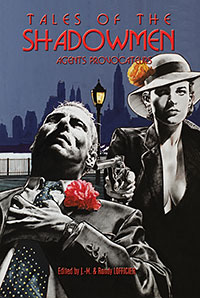 “Tales of the Shadowmen: Agents Provocateurs” (2011) is the eighth volume of this eclectic anthology series from Black Coat Press.
“Tales of the Shadowmen: Agents Provocateurs” (2011) is the eighth volume of this eclectic anthology series from Black Coat Press.
This collection fits into Philip José Farmer‘s “Wold Newton” concept.
The stories in this collection are:
• Matthew Baugh: “Don Camillo and the Secret Weapon” stars a pair of Italian characters, Don Camillo and Peppone, who foil the efforts of a certain British agent and Eva Kant, the associate of Diabolik, the Italian supercrook.
• Nicholas Boving: “The Elphberg Red” takes us to back to the world of the “Prisoner of Zenda” as a group of characters, including Rudolf Rassendyll and Sherlock Holmes and Dr. Watson, tries to stop the Countess Cagliostro from possessing the Elphberg Red.
• Matthew Dennion: “The Most Dreadful Monster” has Madame Atomos (a vengeful Japanese scientist out for revenge against the U.S. because of Hiroshima and Nagasaki, whose stories Black Coat Press is reprinting) making the mistake of kidnapping a certain American scientist named Bruce Banner.
• Win Scott Eckert: “Marguerite’s Tears” is another in his series of stories starring the individuals who were at Wold Newton. This one is set just afterwards, and stars Sir Percy Blakeney along with Violet and Siger Holmes.
• John Gallagher: “The Books of Shadows” is an illustrated portfolio of covers for a series of imaginary books using several of the characters used in this series.
• Martin Gately: “Leviathan Creek” has Rouletabille, the French journalist and sometime secret agent, going up against Kapitan Mors, a long-running character in German pulps, a Nemo/Robur-type character called an “Air Pirate.”
• Micah Harris: “Slouching Towards Camulodunum” is the second part of the story starring Becky Sharp (from “Vanity Fair”), Sâr Dubnotal (an early French occult detective), and others.
• Travis Hiltz: “In the Caves of the Serpent” is set in the Orient, with a group of characters including El Borak (Robert E. Howard), Orlando (Virginia Woolf) and a version of The Wandering Jew fighting against the evil cult of Ubasti.
• Paul Hugli: “Sleep No More” has Harry Dickson (the so-called “American Sherlock Holmes,” created as a European clone of Sherlock Holmes who later becomes a character in his own right) dealing with one of his long-time foes, The Spider. And how this Spider leads to the creation of another, the Master of Men.
• Rick Lai: “Vampire Renaissance” gives the origins of Paul Feval‘s The Vampire Countess (from his novel of the same name), and her encounter with Dracula.
• Joseph Lamere: “Satan’s Signature” has Edgar Allan Poe‘s detective, Auguste Dupin, working with Sherlock Holmes and dealing with Dr. Jekyll. Sharp-eyed readers will pick up a couple of characters who pickup the place of the Holmes brothers.
• Olivier Legrand: “Lost in Averoigne” had Doctor Omega (the early French SF character who is very similar to the first Doctor), teaming up with C.L. Moore‘s Jirel of Joiry. They also encounter Jules de Grandin, Seabury Quinn‘s popular occult detective from Weird Tales.
• J.-M. & Randy Lofficier: “The Affair of the Necklace Revisited” involves a necklace owned by Queen Antoinette, which has been the basis of several stories by Alexander Dumas, as well as a Arsene Lupin story. This new story involved The Avenger, with Judex (the French silent movie serial character who resembles The Shadow) playing a smaller role.
• David McDonald: “Catspaw” has Flashman‘s son (Flashman is a character created by George MacDonald Fraser, who, while a coward and a rogue, gets involved in various historical events and comes up smelling like roses. His son, used by McDonald in prior stories, is similar to the father, but not so cowardly) working with the Nyctalope‘s father (who is shown to be a French diplomat), dealing with an issue in Afghanistan.
• Chris Nigro: “Patricide” has The Phantom of the Opera dealing with the Frankenstein Monster, or in this case, Gouroull, a version of this character from a series of French novels, and learning of their connection. Also features are the “Angels of Music” from prior stories in this series, and Dr. Cornelius, the head of a criminal gang, whose stories have recently been reprinted by Black Coat Press.
• John Peel: “More Imaginative Sins” stars Carnacki (William Hope Hodgson‘s early occult detective) going up against Madame Palmyre, from the occult novel “Baal” (translated by Black Coat Press).
• Dennis E. Power: “Passing through the Hands of Steel” has Passepartout, Phileas Fogg‘s young associate, in a story set during their trip around the world. Here they are in the American west, and Passepartout meets Johnny Brainerd who built the Steam-Man of the Prairies and Winnetou, an Indian from a series of westerns by a German author.
• Pete Rawlik: “Before the War, Five Dragons Roar” is an interesting story which includes several Asian characters, such as Hawaii detective Charlie Chan, Japanese secret agent Mr. Moto, and the sinister Madame Atomos.
• Joshua Reynolds: “The Carolingian Stone” is set prior to WWII, has Belphegor, the Phantom of the Louvre, again up against Chantecoq, King of the Detectives (both from the serial and novel of the same name). Jim Anthony (a U.S. pulp character who is a sort of Doc Savage pastiche, see my posting on him) is also involved, and they go up against Jan Mayen, a German pulp hero.
• Frank Schildiner: “The Death Bird” has Jean Kariven, the French archaeologist pulled into the galactic war between the alien Polarians and Denebians, encountering English detective Albert Campion.
• Michel Stéphan: “With the Compliments of Nestor Burma!” has Nestor Burma (a French noir detective similar to Sam Spade) dealing with Madame Atomos.
• Michel Vannereux: “The Warlord of Vaha” stars John Carter of Mars and Cal de Ter, the hero of a series of French SF novels. Cal, an earthman of the far future, arrives on a primitive world, allowing for “sword and planet” style adventures like John Carter.
At the end of the volume is information on the characters used and who created them, though this may not help point you to where they are from. (Wikipedia is most useful here, along with Black Coat Press’s French Wold Newton site and Cool French Comics site). The “Starring” lists the characters who appear in the story, “Co-starring” lists characters mentioned in the story, and “Also Starring” lists places and things that appear or are mentioned in the story. Sometimes real people and places are mentioned.
I have all the past volumes, and always look forward to this annual series.

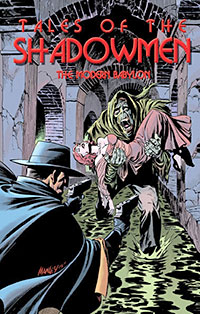
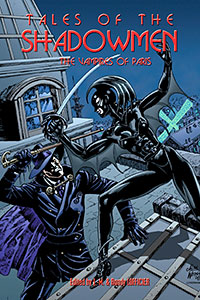
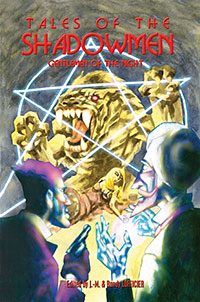
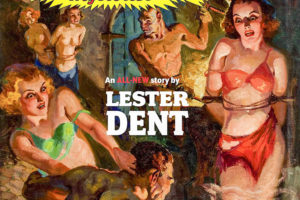
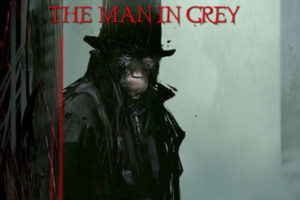
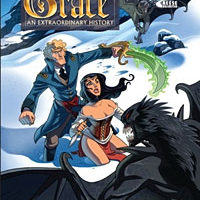
Your comments